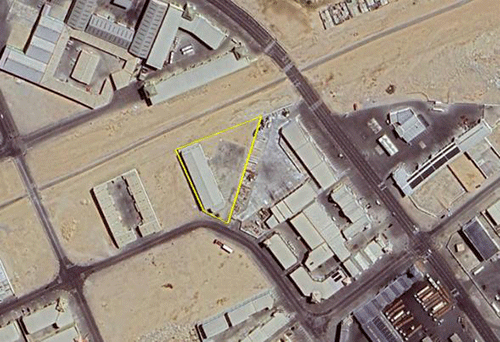Swakopmund outraged by radioactive facility

Source: New Era Live
SWAKOPMUND - Swakopmund residents are outraged over plans for a radioactive material storage and handling facility in the coastal town's general industrial area.
Radioactive material, if not properly managed, can be a risk to human health and environment.
Over the weekend, some residents created an online petition to block the proposed project. Over 1 200 residents already signed the petition.
According to residents, the facility, if approved by the council, puts the lives of residents at risk, as materials such as explosives, gases, flammable liquids and solids, oxidizing substances, and toxic matter will be stored near their homes.
Namaquanum Investment, which has an existing workshop in Einstein Street in the industrial area, plans to refurbish the workshop and construct a dedicated storage facility for radioactive source material used to calibrate and test drilling equipment (well-clogging equipment) used in the offshore oil exploration industry.
The company has appointed Stewart Planning to seek the council's consent for a hazardous storage facility.
Contacted yesterday regarding the project, Johann Otto from Stewart Planning told New Era the developer is planning a media statement which will be shared during the week.
"This media release will help answer and clarify questions raised by the concerned members of the public regarding the project," Otto said.
A document shared by Geo Pollution Technologies states that Namaquanum Investment's clients from the offshore exploration industry will utilise the workshop and source materials and perform the necessary calibrations and tests on their drilling equipment from the proposed projects.
They were roped in to apply for an environmental clearance certificate (ECC) for the proposed facilities and operations. As part of the ECC application, an environmental assessment report and environmental management plan are expected to be submitted to the environment ministry.
The ECC is a requirement for projects or activities to ensure that they comply with the country's environmental laws and regulations if given approval.
"The proponent plans to construct an aboveground storage facility for the storage of the radioactive source material. The facility will conform to stringent industry safety specifications. It will be a six-metre steel shipping container, placed on a concrete or paved surface. The four interior sides of the container will be lined by an approximately 50cm thick, high-density concrete layer. A prefabricated concrete slab will be placed on top of the container.
The container will have intruder alarms, and the area around it will be fenced and locked, with entry strictly controlled. Warning signs will be placed, at minimum, at all entrances to the fenced area. The facility will be under 24-hour closed-circuit television (CCTV) surveillance (outside and inside the container)," the document states.
According to Geo Pollution, the existing workshop will also be transformed into a calibration and testing unit for drilling equipment. The floor will be covered with a new 15cm thick, reinforced, and sealed concrete floor.
Additional emergency infrastructure and equipment will include a fire detection system, firefighting equipment, emergency eye wash stations, and radiation detectors. A standby generator of 350 kVA will also be installed.
"As an alternative option, the facility to store radioactive source material can also be partially underground, with a small building above ground and a bunker pit below ground. The radioactive source material will be stored in a concrete-lined and covered pit with a sliding lockable pit cover. The same safety and security measures will be installed as for the container storage unit," the document indicates.
It further said that regular leak tests will be performed to ensure it remains within the threshold limits. Faulty radioactive source material that cannot be repaired, as well as any obsolete materials, will be returned to the supplier for safe disposal. The necessary security and emergency response plans will be implemented at all times to ensure safety and protection of the environment and the local community.
Meanwhile, Swakopmund resident Louise Engelbrecht who started the online petition against the proposed project, said this project poses significant health and environmental risks to the community.
She motivated the petition by citing the World Health Organization that exposure to radioactive materials can lead to serious health issues including cancer and genetic damage.
Moreover, she said accidents involving such materials could have catastrophic consequences for the environment and future generations.
Engelbrecht urged the relevant authorities in Swakopmund to stop the building of this facility and prioritise public safety over industrial interests.
John Hopkins from the Swakopmund Residents' Association yesterday implored residents to submit objections against the project. He said little information is available on the proposed project to make an informed decision.
"We, at this stage, do not know much about the project and have requested more information. What we understand is that there will be equipment tested and some sort of radioactive activity will take place," he said.
Hence, he said they will only be able to make a well-informed decision once they have all the information available. In the meantime, he urged residents who are not in favour of the project to visit the Swakopmund municipality or use the contact details on the notice and formally lodge their objection.
Spokesperson for the Swakopmund Municipality, Linda Mupupa, yesterday said the application is a standard procedure and that no plans have been approved by the council.
"The public is being requested to submit their comments and objections, and then this application will be submitted to the council for consideration as per procedure."
